Rating index:
Extraordinary (96-100)
Outstanding (93-95)
Very good to Excellent (89-92)
Above average to Good (86-88)
Below Average to Average (80-85)
Avoid (below 80)
More info >
Extraordinary (96-100)
Outstanding (93-95)
Very good to Excellent (89-92)
Above average to Good (86-88)
Below Average to Average (80-85)
Avoid (below 80)
More info >
The German city of Cologne currently has one two-star restaurant; it is Le Moissonnier in the Krefelder Strasse, styled like a French brasserie. The restaurant was originally established as an actual brasserie in 1987 by Vincent and Liliane Moissonnier, who still own the restaurant. Shortly after the opening Eric Menchon took on the role of head chef and more than 25 years later he is still in charge of the kitchen. The restaurant was awarded its first star in 1997 and the second star followed in 2008.
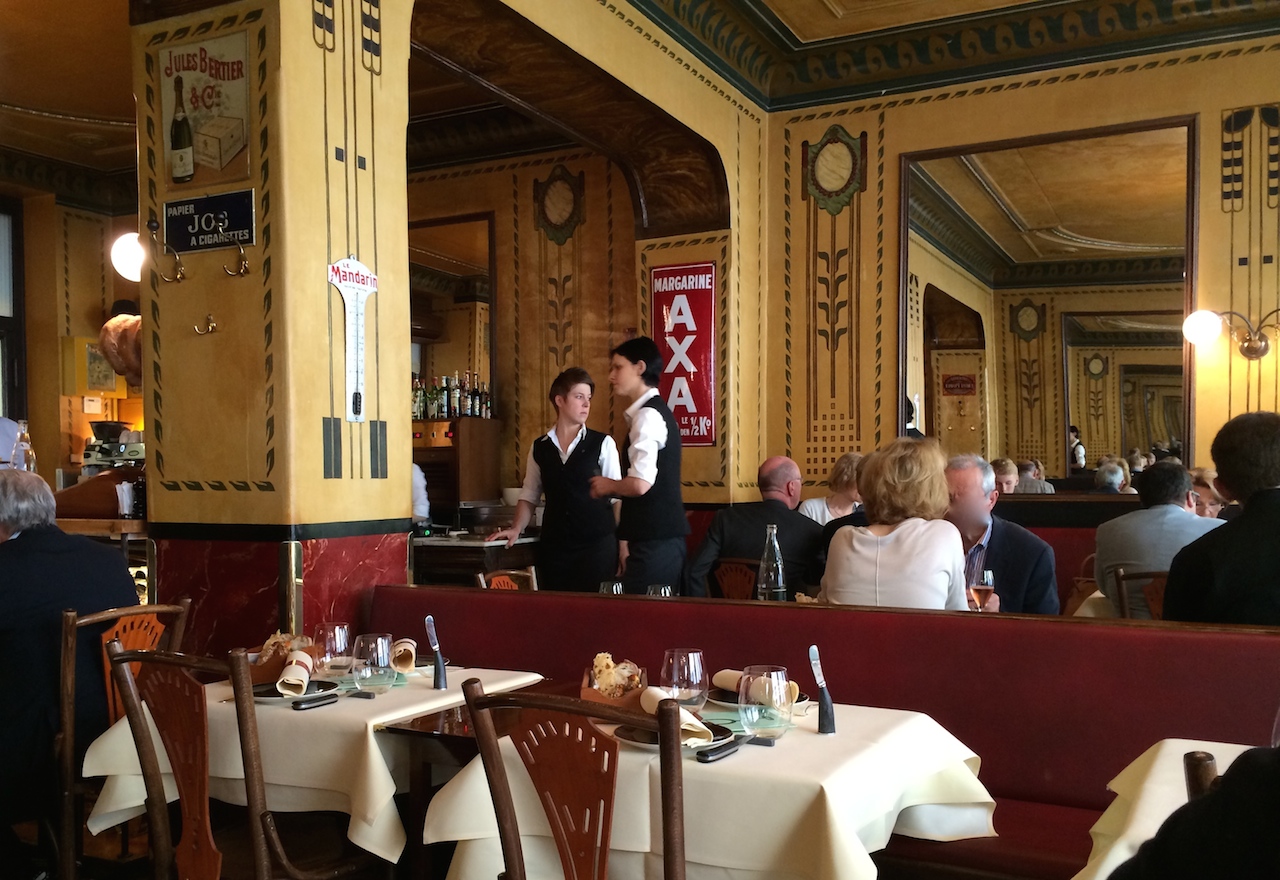
Le Moissonnier is open for lunch and dinner Tuesday till Saturday. The restaurant offers an a la carte menu and a 'week' menu (4 courses for €80). The week menu is not available on Friday and Saturday nights, when the restaurant serves a special 'weekend' menu (6 courses for €130). I had lunch with my husband at Le Moissonnier on Wednesday 28 May 2014 and we both ordered the 4-course week menu.
The first course was comprised of two dishes. An excellent piece of flaky and moist sea bass was served on cuttlefish risotto, and accompanied by a baby mussel, vongole, a mildly floral lavender rouille, thin aniseed toast and tuna sashimi. Onto this a bouillabaisse sauce was poured. The bouillabaisse sauce had a good depth of flavour and complemented the sea bass well. A tasty dish with classic flavours, the lavender rouille providing a nice modern twist, however the dish could have done without the tuna sashimi. The second dish was a transparent crab raviolo served with a delicately flavoured coffee and saffron foam. A lovely and elegant flavour combination.
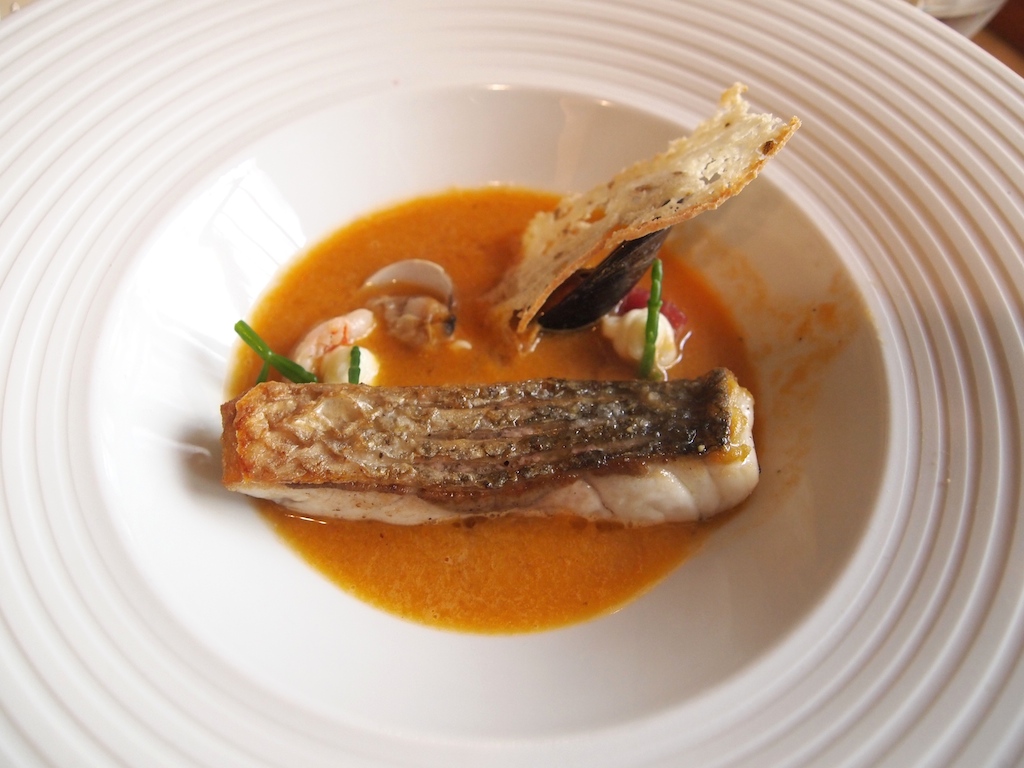
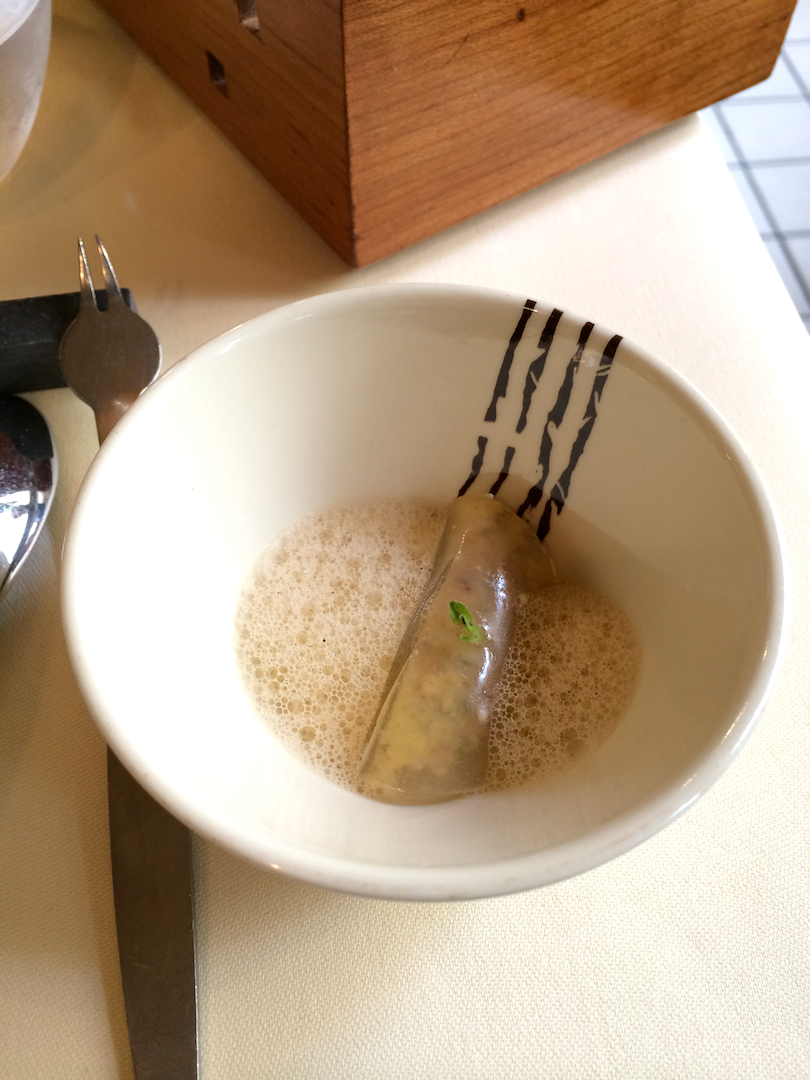
Two perfectly cooked pieces of hake followed, one 'au naturel' and one covered with a thin layer of miso paste and a crunchy bread and Taggiasche olive topping. The hake was served with a light curry-lime sauce and a creamy Noilly Prat sauce. A dish of eel, apple, white coco beans, mackerel jelly and crunchy bread crumbs was served on the side. Two well-executed dishes that worked individually, with lovely balanced creaminess and bitters in the hake dish and a nice contrast of flavours and textures in the bean and eel dish. However, viewed as a whole, the dishes weren't really convincing as a package. The hake didn't bring anything to the bean and eel dish and vice versa.
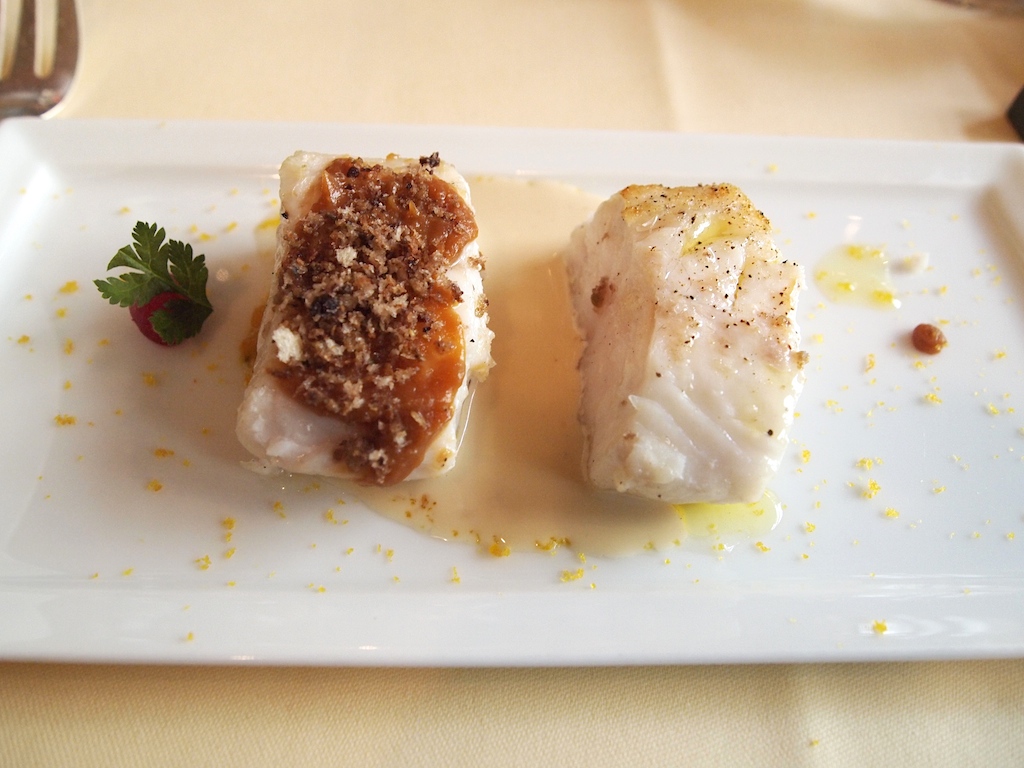
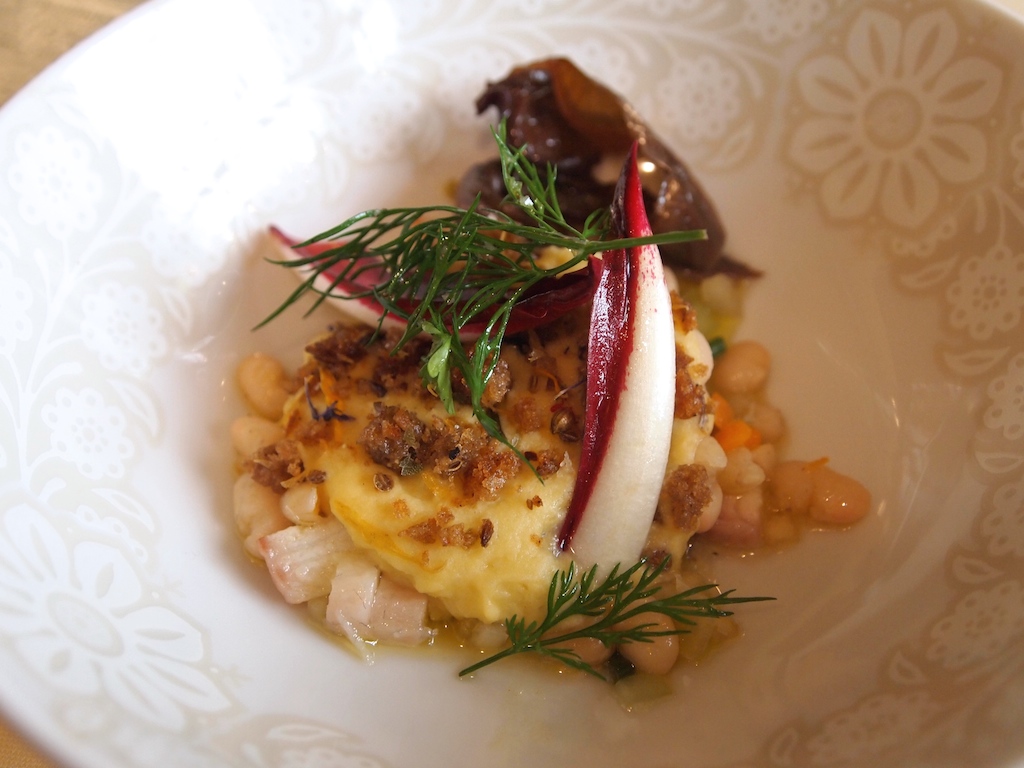
Third course were two soft and peppery sweetbreads, caramelised in Patchouli vinegar, and served with crispy quinoa, a mandarin puree, crème fraîche and some wonderfully crunchy shiso tempura. This time there was a side dish of roasted potato, wilted chard, lovage oil, chantarelles and clear ham broth. Two elegant and balanced dishes.

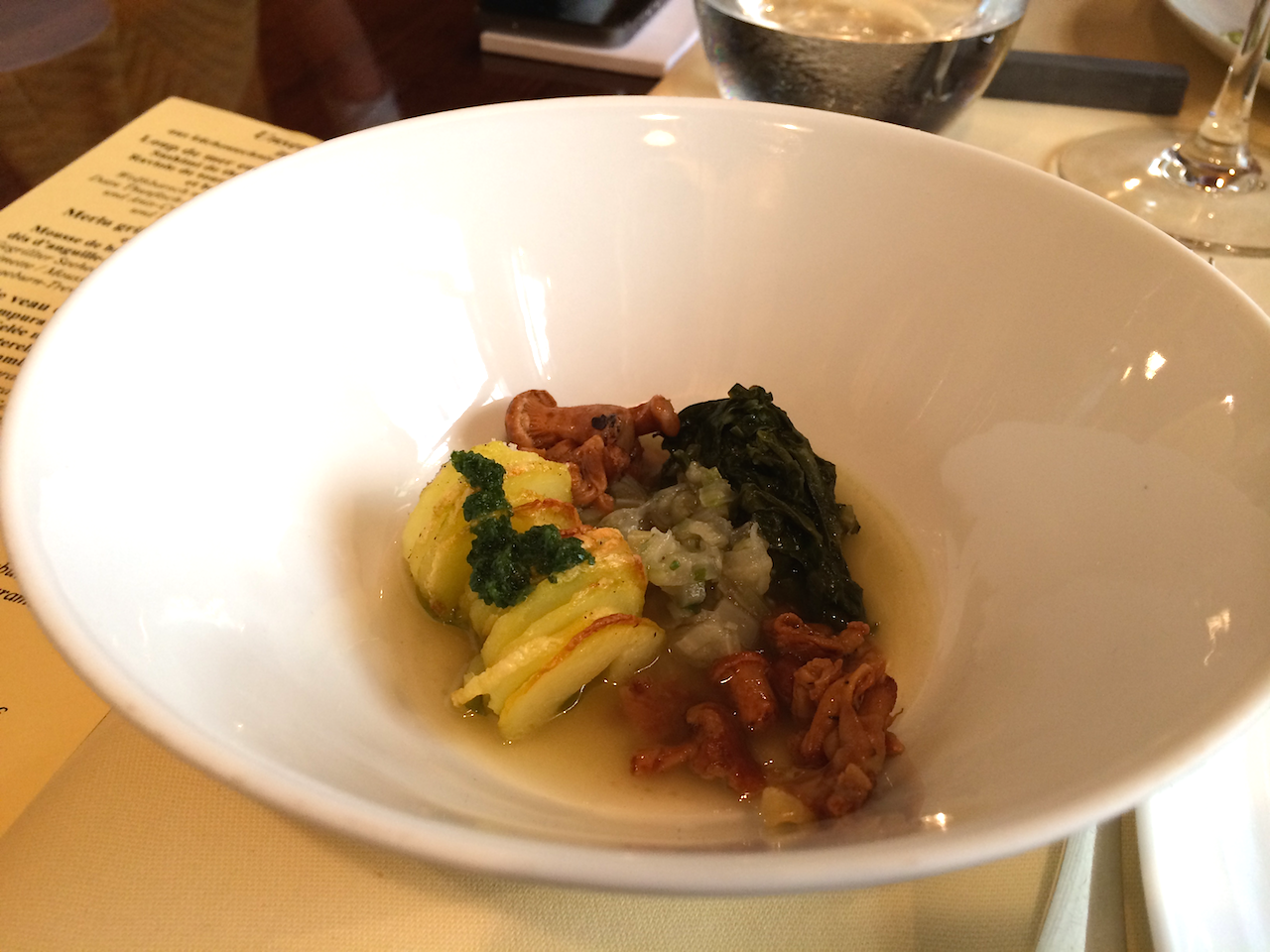
Before dessert we had an extra cheese course, to share. Le Moissonnier offers a terrific selection of well-matured (mainly French) cheeses.

In keeping with the theme of this meal, dessert was comprised of two dishes. Delicious popcorn ice cream, salted caramel and some freshly puffed beurre noissette popcorn was joined by a rich chocolate dessert of ice praline with salted butter crumble. Again two delightful desserts, but I didn't really get why they were served together; to me they seemed two quite separate dishes.


The food at Le Moissonnier is quite elaborate in style and not always very focused, but the flavours in the individual dishes were balanced and even though there were some unusual combinations, I enjoyed eating all the dishes that were served. On a conceptual level however, I had a tough time getting my head around this menu. What was presented as a four course menu, effectively consisted of eight dishes and I sometimes had difficulty finding the connection between the dishes that were paired with each other. Service however was excellent and we enjoyed some lovely French wines. Lunch at Le Moissonnier was an enjoyable experience and in spite of its quite eclectic food, it provides a touch of French je-ne-sais-quoi in the heart of the German Rhineland, where Teuton and Gaul find themselves joined in culinary harmony.













